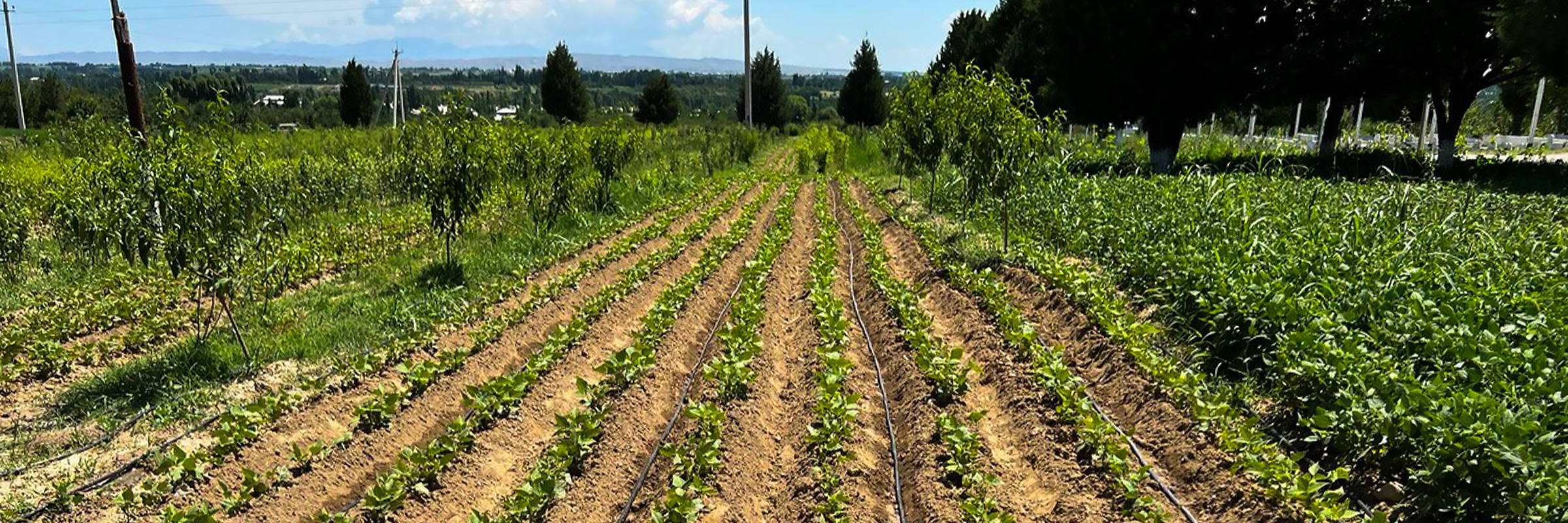

The challenge
The challenge for local farmers was to find ways to use land and water more efficiently and improve land and labour productivity whilst ensuring environmental and social sustainability.
The program spanned eight districts of Ferghana Valley across three irrigation systems: IIsfayram-Shakhimardan, Podshaota-Chodak, and Savay-Akburasoy. Funded by the World Bank and the European Union, SMEC was engaged as capacity building consultant. The main objectives of the consulting services were to strengthen institutions and knowledge capacity of the relevant stakeholders.

The solution
SMEC oversaw the curation and implementation of training courses (including training of trainers) to build knowledge and operational capacity of farmers, representatives of water consumer associations, and water service providers.
As part of the project, SMEC conducted a study tour in October 2022. Participants included representatives from the Ministry of Water Resources, the Centre of Implementation of Water Sector Projects, Agency of International Fund for Saving the Aral Sea (GEF) and the National Water Resources Management Project in Uzbekistan.
The tour visited Australia to learn from the country’s developed irrigation sector, an example of international best practice for multi-user conjunctive irrigation in an arid/semi-arid environment.
Key stops in the tour itinerary included:
- Goulburn Murray Water; Weir Inspection and 17 Mile Regulator (Shepparton)
- Goulburn Murray Water (Swan Hill and Loddon Torrumbarry Irrigation Districts)
- Rubicon Factory (Shepparton)
- Water Control Solutions Factory
- Agriculture Victoria Research Station (Tatura), offering insights into agricultural research activities being undertaken in Australia
- Murray River Irrigation
- Southern Rural Water Werribee District
- Monash University – “UAV Soil Moisture Mapping for Smart Irrigation”
Knowledge was shared on the use of modern irrigation and water saving technologies for agriculture. Participants also gained an understanding of agricultural research activities undertaken in Australia to support farmers and the overall economy. The group took away ways to improve on-farm water demand estimation and water management.
The scope of work has been conducted across the following three interconnected disciplines:
1. Irrigation Modernization
- Overseeing implementation of new irrigation and drainage systems to increase water supply and reduce wastage from surface and groundwater sources
- Implementing new systems to control and distribute water along the canal network
- Overseeing rehabilitation of surface irrigation systems
- Rehabilitation and construction of pump stations
- Construction of wells
- Flood control and bank protection

2. Support for Agricultural Modernization
- Capacity building to diversify agriculture practices
- Direct training activities included information dissemination, technology demonstrations and experience sharing activities
- SMEC helped to train a special service in water management to undertake ongoing water measurement, and water accounting to enhance govt understanding of water usage and needs of the community.
- SMEC undertook collaboration with the Andijan Scientific-Research Institute. It has an area of 10 hectares and is irrigated by new canals and vertical wells. As an experiment, different irrigation methods are used for Vegetables, Potatoes, Watermelon and other crops to measure the impact of each treatment on productivity.
- SMEC is providing ongoing financial and technical support to support long term capacity building

3. Project Management
- Strengthening of the Ministry of Agriculture and Ministry of Water Resources capacity for project management
- Monitoring and evaluation
- Procurement Panel and an annual technical audit of civil works3Comprehensive management information and data collection and reporting system on key performance outputs and impact indicators

The impact
SMEC has implemented several energy-and water saving technologies for on-farm irrigation.
A key aspect of the project has been the upgrading and modernization of the Mukhtar tertiary canal in Andijan province, which supplies water to an area of 550 hectares. Mukhtar canal and all receiving trenches have been reconstructed with new Hydraulic control infrastructure and water measuring equipment installed.
Two similar tertiary demonstration canals will be established in Gulistan, Ferghana province and Gaznon, Namangan province. Each will demonstrate the modern approach of asset management planning, water distribution and flow measurement for billable irrigation services.
More than 180,000 farmers in the surrounding area are expected to benefit from this project, which is expected to be completed in August 2024. SMEC deployed a team of subject matter experts with a Team Leader / Senior Irrigation Management Specialist to assist with the sustainable development of irrigated agriculture to use land and water more efficiently.
Ultimately, farmers and farm workers will benefit from higher returns per unit of land and water, improved productivity of labour and greater employment opportunities.
Uzbekistan
Ministry of Water Resources




